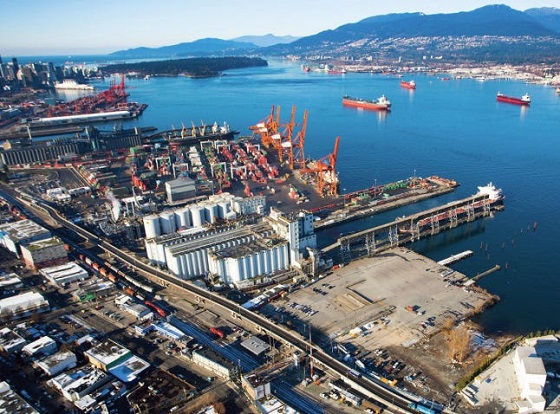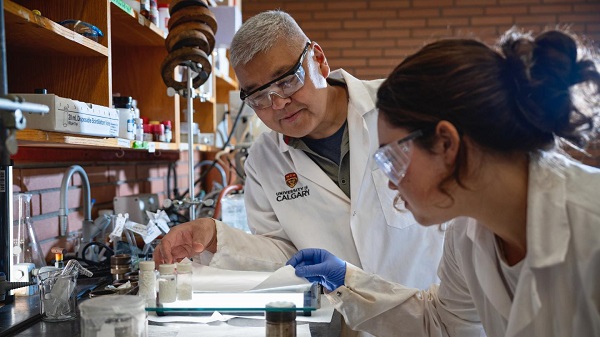Alberta
Doubling surgical capacity in Rocky Mountain House
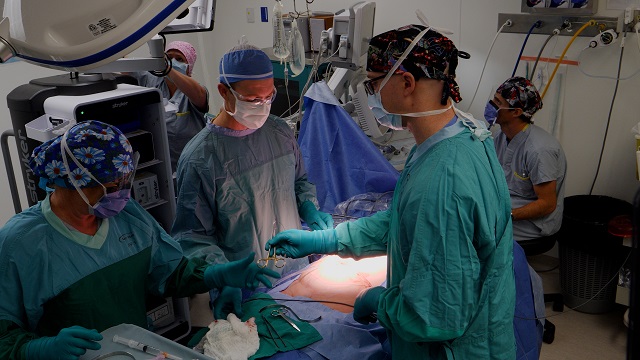
Rural Albertans will be able to access surgeries quicker and closer to home now that the expansion and renovation of the Rocky Mountain House Health Centre is complete.
The Rocky Mountain House Health Centre has been providing residents with health care since 1971, including surgical services. Alberta Infrastructure has completed an addition to the facility, which includes a new operating room. This will enable approximately 120 Albertans per month to receive surgery, doubling the number of monthly surgeries. This additional, brand-new operating room is also expected to decrease the wait lists for surgeries.
The expanded Rocky Mountain House Health Centre provides an additional 440 square metres (4,736 square feet) and includes:
- a new operating room,
- 6 additional recovery beds,
- a patient support area, and
- an updated medical device reprocessing department.
The new spaces can be accessed from the existing site thanks to the addition of an upgraded hallway that connects the two buildings.
“Completing the expansion and renovation of the Rocky Mountain House Health Centre is a significant step forward in delivering Alberta Surgical Initiative projects province wide. This investment into health care infrastructure will increase surgical capacity, helping Albertans get treatment when and where they need it.”
The Rocky Mountain House Health Centre upgrade is part of the Alberta Surgical Initiative (ASI), which aims to enhance surgical capacity across the province by expanding and maximizing existing health care space. Over the next three years, the 2024 Capital Plan is providing $313 million for ASI projects throughout the province.
Alberta Infrastructure and Alberta Health Services share the responsibility for delivering ASI projects. Alberta Health Services leads the delivery of smaller projects, while Alberta Infrastructure delivers capital projects over $5 million.
“Albertans deserve timely access to surgeries, and they should be able to get them close to home. The expansion and renovation of the Rocky Mountain House Health Centre will increase its capacity so more Albertans can get the surgeries they need when they need them. Through the Alberta Surgical Initiative, we are improving access to surgical care and funding projects across the province, including in rural communities like Rocky Mountain House.”
Alberta Infrastructure is working on 20 ASI projects in communities across Alberta, including Brooks, Calgary, Camrose, Edmonton, Fort Saskatchewan, Innisfail, Lethbridge, Olds, Ponoka, St. Albert and Stettler. Lethbridge will be the next community to benefit from a completed ASI project. The expansion of two operating rooms and more surgical inpatient rooms at the Chinook Regional Hospital is anticipated to be completed later this fall.
“The expanded Rocky Mountain House Health Centre will help ensure more residents can access surgeries and receive the care they need in a timely manner. Investments like these in rural Alberta matter and I’d like to thank Minister Guthrie and Minister LaGrange for delivering on this project that will double our surgical capacity in Rocky Mountain House.”
Quick facts
- The total budget for the Rocky Mountain House Health Centre ASI project was $15 million.
- This Alberta Infrastructure project was completed on time and on budget. Approximately 85 construction-related jobs were created during the project.
- In addition to the new building, other renovations include new mechanical and electrical building systems.
- Alberta Infrastructure is managing other ASI projects at the following locations:
- Brooks Health Centre
- Calgary
- Alberta Children’s Hospital
- Foothills Medical Centre
- South Health Campus
- Camrose – St. Mary’s Hospital
- Edmonton
- Grey Nuns Community Hospital
- Misericordia Community Hospital
- Royal Alexandra Hospital
- Walter C. Mackenzie Centre (University of Alberta Hospital)
- Fort Saskatchewan Community Hospital
- Innisfail Health Centre
- Lethbridge – Chinook Regional Hospital
- Olds Hospital and Care Centre
- Ponoka Hospital and Care Centre
- St. Albert – Sturgeon Community Hospital
- Stettler Hospital and Care Centre
- Other ASI projects completed by Alberta Infrastructure:
- Grande Prairie Regional Health Centre (completed in July 2022)
- University of Alberta (completed September 2023)
Alberta
Gondek’s exit as mayor marks a turning point for Calgary

This article supplied by Troy Media.
The mayor’s controversial term is over, but a divided conservative base may struggle to take the city in a new direction
Calgary’s mayoral election went to a recount. Independent candidate Jeromy Farkas won with 91,112 votes (26.1 per cent). Communities First candidate Sonya Sharp was a very close second with 90,496 votes (26 per cent) and controversial incumbent mayor Jyoti Gondek finished third with 71,502 votes (20.5 per cent).
Gondek’s embarrassing tenure as mayor is finally over.
Gondek’s list of political and economic failures in just a single four-year term could easily fill a few book chapters—and most likely will at some point. She declared a climate emergency on her first day as Calgary’s mayor that virtually no one in the city asked for. She supported a four per cent tax increase during the COVID-19 pandemic, when many individuals and families were struggling to make ends meet. She snubbed the Dec. 2023 menorah lighting during Hanukkah because speakers were going to voice support for Israel a mere two months after the country was attacked by the bloodthirsty terrorist organization Hamas. The
Calgary Party even accused her last month of spending over $112,000 in taxpayers’ money for an “image makeover and brand redevelopment” that could have benefited her re-election campaign.
How did Gondek get elected mayor of Calgary with 176,344 votes in 2021, which is over 45 per cent of the electorate?
“Calgary may be a historically right-of-centre city,” I wrote in a recent National Post column, “but it’s experienced some unusual voting behaviour when it comes to mayoral elections. Its last three mayors, Dave Bronconnier, Naheed Nenshi and Gondek, have all been Liberal or left-leaning. There have also been an assortment of other Liberal mayors in recent decades like Al Duerr and, before he had a political epiphany, Ralph Klein.”
In fairness, many Canadians used to support the concept of balancing their votes in federal, provincial and municipal politics. I knew of some colleagues, friends and family members, including my father, who used to vote for the federal Liberals and Ontario PCs. There were a couple who supported the federal PCs and Ontario Liberals in several instances. In the case of one of my late
grandfathers, he gave a stray vote for Brian Mulroney’s federal PCs, the NDP and even its predecessor, the Co-operative Commonwealth Federation.
That’s not the case any longer. The more typical voting pattern in modern Canada is one of ideological consistency. Conservatives vote for Conservative candidates, Liberals vote for Liberal candidates, and so forth. There are some rare exceptions in municipal politics, such as the late Toronto mayor Rob Ford’s populistconservative agenda winning over a very Liberal city in 2010. It doesn’t happen very often these days, however.
I’ve always been a proponent of ideological consistency. It’s a more logical way of voting instead of throwing away one vote (so to speak) for some perceived model of political balance. There will always be people who straddle the political fence and vote for different parties and candidates during an election. That’s their right in a democratic society, but it often creates a type of ideological inconsistency that doesn’t benefit voters, parties or the political process in general.
Calgary goes against the grain in municipal politics. The city’s political dynamics are very different today due to migration, immigration and the like. Support for fiscal and social conservatism may still exist in Alberta, but the urban-rural split has become more profound and meaningful than the historic left-right divide. This makes the task of winning Calgary in elections more difficult for today’s provincial and federal Conservatives, as well as right-leaning mayoral candidates.
That’s what we witnessed during the Oct. 20 municipal election. Some Calgary Conservatives believed that Farkas was a more progressive-oriented conservative or centrist with a less fiscally conservative plan and outlook for the city. They viewed Sharp, the leader of a right-leaning municipal party founded last December, as a small “c” conservative and much closer to their ideology. Conversely, some Calgary Conservatives felt that Farkas, and not Sharp, would be a better Conservative option for mayor because he seemed less ideological in his outlook.
When you put it all together, Conservatives in what used to be one of the most right-leaning cities in a historically right-leaning province couldn’t decide who was the best political option available to replace the left-wing incumbent mayor. Time will tell if they chose wisely.
Fortunately, the razor-thin vote split didn’t save Gondek’s political hide. Maybe ideological consistency will finally win the day in Calgary municipal politics once the recount has ended and the city’s next mayor has been certified.
Michael Taube is a political commentator, Troy Media syndicated columnist and former speechwriter for Prime Minister Stephen Harper. He holds a master’s degree in comparative politics from the London School of Economics, lending academic rigour to his political insights.
Troy Media empowers Canadian community news outlets by providing independent, insightful analysis and commentary. Our mission is to support local media in helping Canadians stay informed and engaged by delivering reliable content that strengthens community connections and deepens understanding across the country
Alberta
From Underdog to Top Broodmare

WATCH From Underdog to Top Broodmare (video)
Executive Producers Jeff Robillard (Horse Racing Alberta) and Mike Little (Shinelight Entertainment)
What began as an underdog story became a legacy of excellence. Crackers Hot Shot didn’t just race — she paved the way for future generations, and in doing so became one of the most influential producers the province has known.
The extraordinary journey of Crackers Hot Shot — once overlooked, now revered — stands as one of Alberta’s finest success stories in harness racing and breeding.
Born in humble circumstances and initially considered rough around the edges, Crackers Hot Shot overcame long odds to carve out a career that would forever impact the province’s racing industry. From a “wild, unhandled filly” to Alberta’s “Horse of the Year” in 2013, to producing foals who carry her spirit and fortitude into future generations.
Her influence ripples through Alberta’s racing and breeding landscape: from how young stock are prepared, to the aspirations of local breeders who now look to “the mare that did it” as proof that world-class talent can emerge from Alberta’s paddocks.
“Crackers Hot Shot, she had a tough start. She wasn’t much to look at when we first got her” — Rod Starkewski
“Crackers Hot Shot was left on her own – Carl Archibald heard us talking, he said ‘I’ll go get her – I live by there’. I think it took him 3 days to dig her out of the snow. She was completely wild – then we just started working on her. She really needed some humans to work with her – and get to know that people are not scary.” — Jackie Starkewski
“Crackers Hot Shot would be one of the top broodmares in Albeta percentage wise if nothing else. Her foals hit the track – they’re looking for the winners circle every time.” — Connie Kolthammer
Visit thehorses.com to learn more about Alberta’s Horse Racing industry.
-

 Environment13 hours ago
Environment13 hours agoThe era of Climate Change Alarmism is over
-

 Business19 hours ago
Business19 hours agoYou Won’t Believe What Canada’s Embassy in Brazil Has Been Up To
-

 Agriculture2 days ago
Agriculture2 days agoCloned foods are coming to a grocer near you
-

 International2 days ago
International2 days agoSagrada Familia Basilica in Barcelona is now tallest church in the world
-
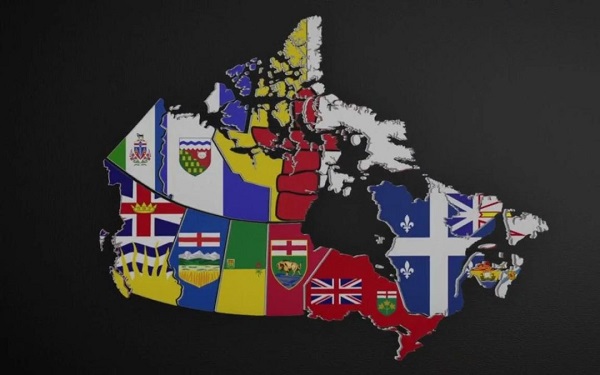
 Fraser Institute2 days ago
Fraser Institute2 days agoOttawa continues to infringe in areas of provincial jurisdiction
-
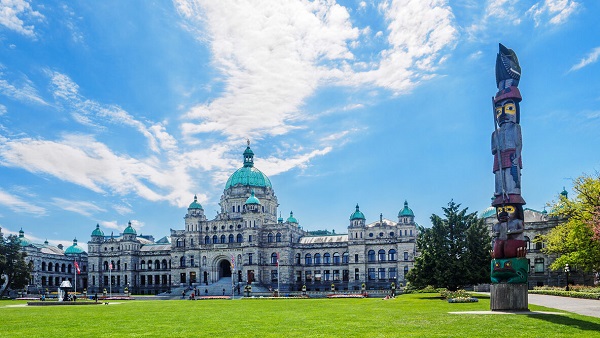
 Aristotle Foundation5 hours ago
Aristotle Foundation5 hours agoB.C. government laid groundwork for turning private property into Aboriginal land
-

 Alberta2 days ago
Alberta2 days agoGondek’s exit as mayor marks a turning point for Calgary
-

 Automotive19 hours ago
Automotive19 hours agoCarney’s Budget Risks Another Costly EV Bet




